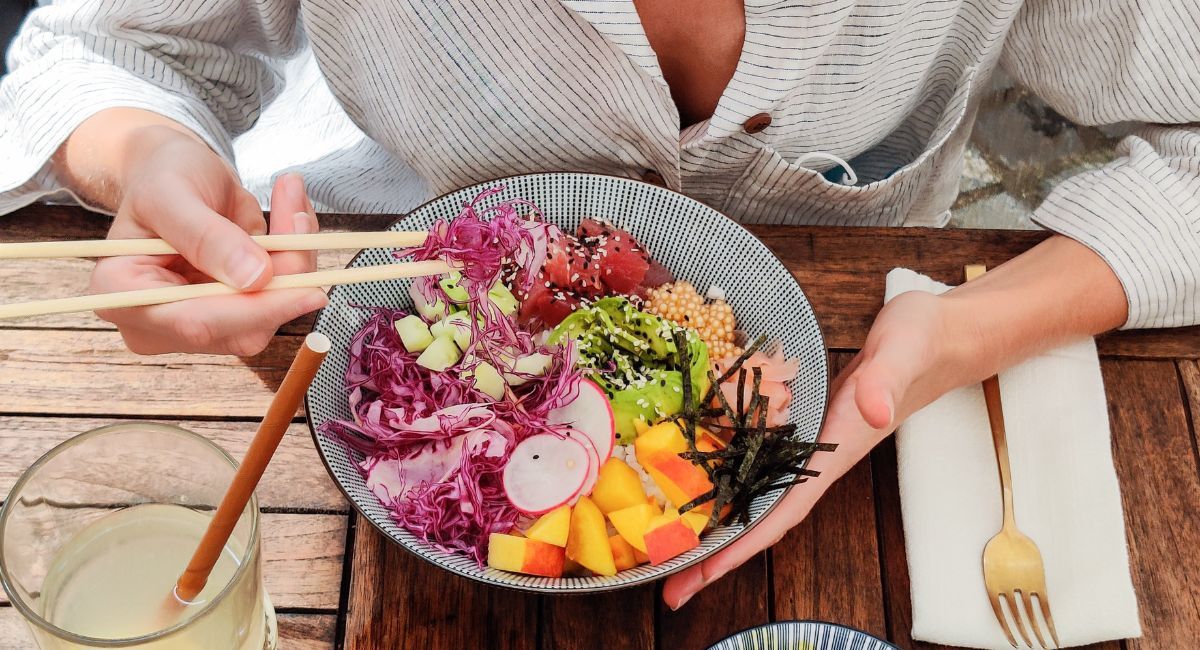
I’m Confused, What’s the Best Diet for Me?
First of all, if you are asking this question, you are on the right track for the best diet. Many people are unintentional about what they put into their bodies, leaving them undernourished, overfed, and feeling fatigued, fat, foggy-brained, and frustrated. Once you start to make more intentional choices about fueling your body and noticing how those changes make you feel, typically the more motivated you become to continue making good choices.
So what are good choices? The answer is, it depends. It depends on who you are: your goals, your activity level, your individual food sensitivities, your nutritional deficiencies, and your food preferences.
In general, the healthiest, best diet is one that includes mostly vegetables, in a variety of colors, both cooked and raw, every day. Vegetables should make up the largest portion of what you eat. Then, focus on getting lean protein from both animal and plant-based sources. And don’t forget about fat – healthy fat. You need fat to make your hormones, to feed your brain and nerves, to supply all the cells in your body with materials to make the cell membranes, and even to keep your blood sugar better stabilized and help you to feel fuller for longer (which prevents you from eating carbohydrates again sooner than you might otherwise need to).
Essential Components of a Healthy Diet
Vegetables: The Foundation of Nutrient-Rich Eating
Eat a variety of differently colored vegetables. Kale and spinach are a great start, but if you only eat green leafy vegetables and skip the other colors, you aren’t getting as large a variety of phytonutrients as if you were to incorporate more colorful vegetables into your diet. Think beets (golden and red), red peppers, squash, carrots, celery, sweet potato, radish, cauliflower, onion (yes, white is a color), eggplant, and more into your best diet.
Three of my favorite ways to get vegetables into my family’s diet:
- Roasted vegetables: pick any vegetables you like, cover them with a little avocado oil or ghee, some salt and pepper, and roast at 400 degrees for about 40-50 minutes (depending on the vegetable). My favorite vegetables to do this with are brussel sprouts (trust me, they’re delicious), sweet potato, onion, garlic, potato (not too much; they have a high glycemic index), beets, carrots, cauliflower, and butternut squash. Pick 4-5 of these, and roast them up for supper along with a nice piece of wild-caught fish, grass-fed beef, or organic chicken.
- Salads: you can perk up salads with a variety of leafy greens and other vegetables and a nice olive oil and balsamic vinegar dressing. Things we like to put on our salads include colorful bell peppers, carrots, avocado, red onion, asparagus, jicama, chickpeas, lentils or black beans (legumes, but still healthy). We also add a few raisins or dried cherries (watch out for added sugars), walnuts or pecans, hard-boiled eggs (for protein), and maybe some marinated organic chicken breast (use balsamic and oil to marinade, too). You can also add hemp seeds, chia seeds, and sunflower seeds. Salads don’t have to be boring.
- Smoothies: they’re trendy right now for good reason. You can pack a lot of nutrients into a smoothie – more than you would be able to chew and swallow – into a smoothie.
Lean Proteins: Building Blocks for Your Body
Protein can come from plant and animal sources. Ideally, you should try to get protein from a variety of sources. When it comes to animal proteins, the best choices include grass-fed beef, or lamb, wild-caught (as opposed to farm-raised) fish, and organic free-range poultry and eggs. Choosing these products over cheaper alternatives affirmatively adds health benefit, while also decreasing your exposure to toxins that tend to be in conventionally raised animal protein products.
Healthy Fats: Why They’re Essential for Optimal Health
Fat is not the enemy. There was a time not so long ago, that fat was vilified in favor of carbohydrates. Research is now showing that healthy fats are not the cause of increasing obesity and inflammatory disease (just the opposite, actually) in our society. Rather, simple carbohydrates and processed foods are among those high on the list of culprits.
Healthy fats are found in a variety of nuts and seeds, avocados, grass-fed meats, organic free-range poultry and eggs, wild-caught fish, coconut oil, MCT oil, avocado oil, and nut/seed butters, and even dark chocolate.
The Role of Smoothies in a Nutrient-Dense Diet
A few tips for making smoothies:
- Make them with at least 60% vegetables and no more than 40% fruits.
- Vegetable smoothies can get a little “heavy,” so brighten them up with apple cider vinegar or citrus juice.
- Add protein and fat, like MCT oil or unflavored protein powder, for brain fuel and longer satiety.
- Use frozen berries for antioxidant power and sweetness.
Hydration: The Cornerstone of Health
It’s amazing what adequate hydration can do also, so make sure you’re getting plenty of clean water in addition to all these wonderful foods.